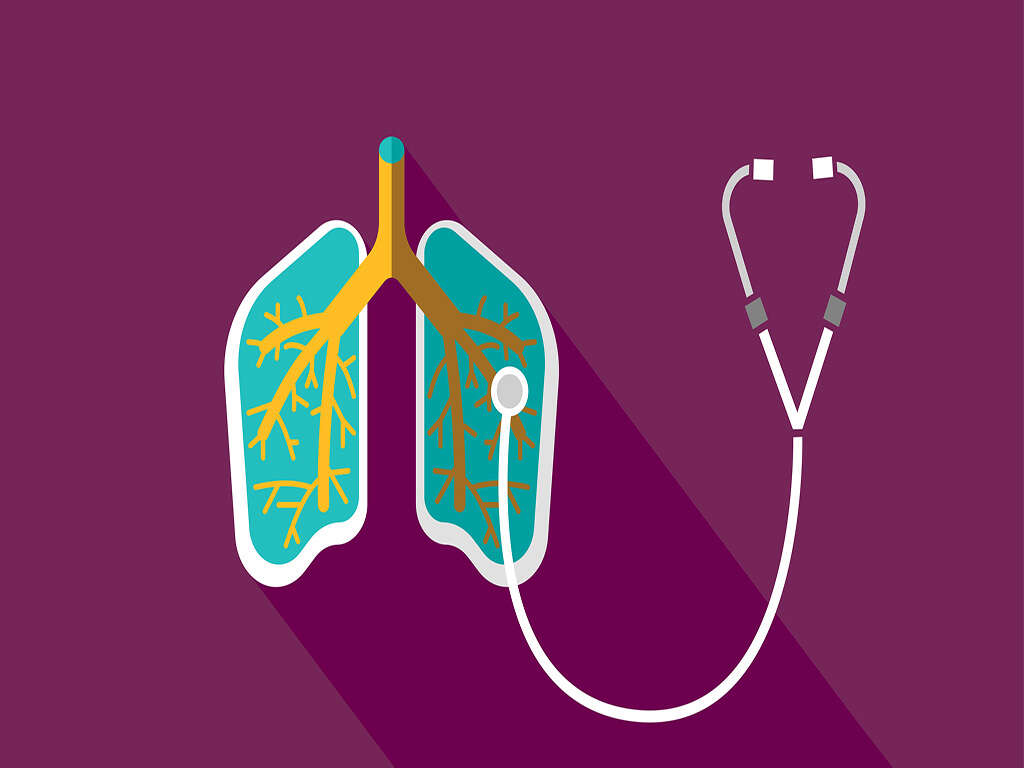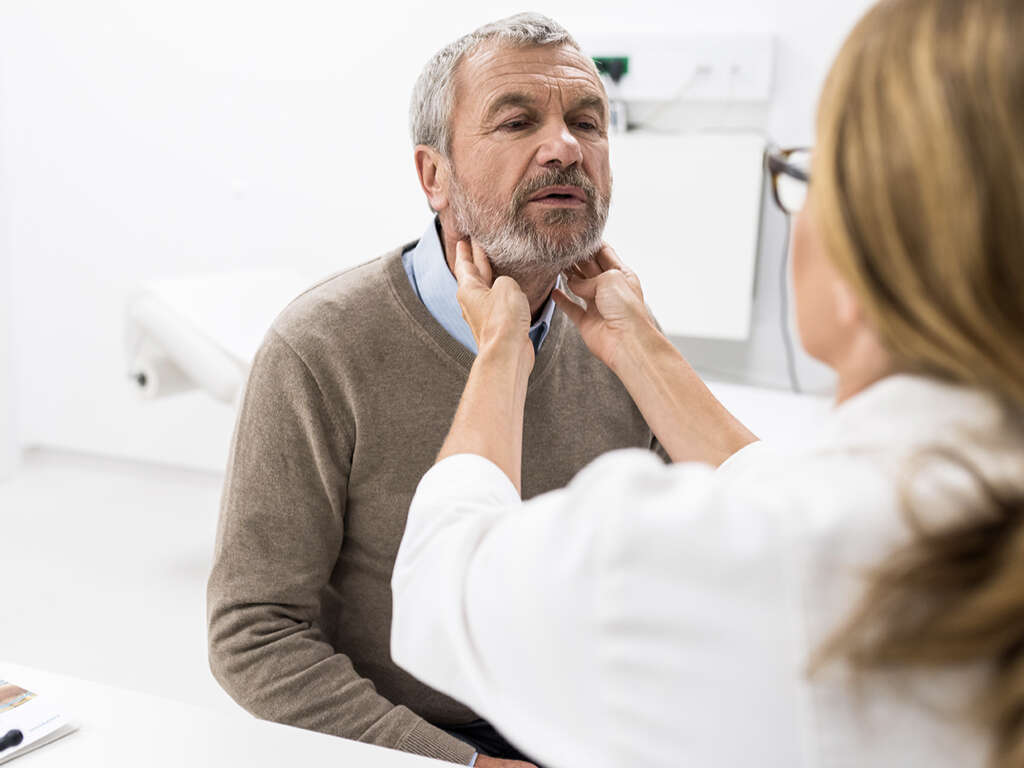10 COPD Symptoms
Chronic obstructive pulmonary disease (COPD) is a type of lung disease characterized by poor airflow. It is a progressive disease that can worsen with time and gradually make routine activities, such as walking or cooking, more difficult. COPD can be broadly categorized into two different types: emphysema and chronic bronchitis. The term “chronic bronchitis” is used to describe a productive cough that has been present for a minimal duration of 3 months every year for two years.
The most common cause of COPD is tobacco smoking, coupled with factors such as genetics and air pollution. Common sources of air pollution in the developing world are poor venting and cooking fires, where prolonged exposure can result in narrowing of the airways and lung tissue breakdown. Unlike asthma, however, airflow in COPD does not improve much despite the use of a bronchodilator. Prevention of COPD includes reducing exposure to tobacco smoke and air pollution. Although there is no cure, current therapies help slow the progression and control the symptoms of the disease.
Treatment and management of COPD involve respiratory rehabilitation, quitting smoking, and inhalation with steroids and bronchodilators. Some patients may also benefit from long-term oxygen therapy. Acute episodes of COPD may require hospitalization to stabilize the patient. By 2015, COPD affected approximately 174.5 million of the global population, resulting in 3.2 million deaths. More than 90 percent of deaths occur in the developing world. COPD is mostly seen among those over the age of 40.

Symptom #1: Sputum Production
Sputum, also known as mucus or phlegm, refers to the coughed-up material produced in the lower airways. Sputum samples are often used for the microbiological investigations of possible respiratory infections.
In COPD, the cough can be productive with the amount of sputum changing over hours to days. Increased or excessive sputum production is a common symptom among COPD patients, contributing to the severity of the cough as the body attempts to remove the extra mucus.

Symptom #2: Shortness of Breath
Shortness of breath, or dyspnea, refers to the feeling where one is unable to breathe well enough. It is characterized by sensations such as increased effort to breathe, air hunger, and chest tightness.
Shortness of breath can be seen in patients with anxiety, asthma, pneumonia, interstitial lung disease, heart failure, COPD, and more. Dyspnea is one of the most common symptoms seen among COPD patients with treatment being largely dependent on the underlying cause.

Symptom #3: Cough
A cough is a sudden and repetitive reflex that helps clear the airways of irritants, foreign particles, and fluids. It comes in the form of a distinctive sound produced by the violent release of air after the opening of the glottis.
Frequent coughing usually means that there may be an underlying disease or infection. Through an evolutionary perspective, pathogens such as viruses and bacteria have “learned” to spread to new hosts by causing the infected host to cough. Coughing is commonly observed with air pollution, asthma, COPD, post nasal drip, lung cancer, heart failure, and more.

Symptom #4: Rib Fractures
Rib fractures occur when there is a break in the rib bone. It can result in chest pain, pain during breathing, and bruising. Complications of rib fractures include pulmonary contusion and pneumothorax. Although rib fractures usually occur due to direct injury to the chest area, such as a road traffic accident or crush injury, vigorous or violent coughing can also result in a broken rib.
Rib fractures are managed using pain medication such as paracetamol, opioids, and non-steroidal anti-inflammatory drugs (NSAIDs).

Symptom #5: Loss of Consciousness
Since COPD is a condition that causes restrictive airflow, it results in hypoxia. In acute exacerbation of COPD, cough syncope can occur. Syncope, or fainting, occurs when there is loss of muscle strength and consciousness followed by spontaneous recovery.
It occurs due to a decrease in blood flow to the brain and is often associated with sweating, pallor, blurry vision, nausea, and light-headedness. Vigorous coughing can also lead to a brief loss of consciousness.

Symptom #6: Wheezing
A wheeze is a continuous and coarse whistling sound produced by the narrowing or obstruction of the airways during breathing. Wheezing is commonly seen among patients with lung diseases such as asthma, lung cancer, heart failure, COPD, and more.
In patients with COPD, specifically, wheezing can be due to the excessive mucus that obstructs the airways.

Symptom #7: Peripheral Edema
Peripheral edema refers to the accumulation of fluid in the tissues, usually in the lower limbs. It can occur as a result of aging, congestive heart failure, portal hypertension, alcoholism, liver cirrhosis, pregnancy, and more.
Patients with advanced COPD can experience pulmonary hypertension or high pressure on the arteries of the lungs, causing strain on the right ventricle of the heart. This leads to issues such as peripheral edema and bulging neck veins.

Symptom #8: Tachycardia and Sweating
Tachycardia refers to abnormal or excessively fast heart rate of over 100 beats per minute. It is commonly seen in exertion, alcohol and amphetamine use, atrial fibrillation, and more.
Tachycardia, along with sweating, possible cyanosis, confusion, and active use of the accessory muscles of respiration, can occur during an acute episode of COPD as the patient has difficulty breathing. Wheezing or stridor can be observed in severe cases.

Symptom #9: Depression
Depression is a commonly seen symptom among patients with COPD. It has been estimated that as many as 40 percent of COPD patients suffer from clinical depression, which may be due to the impaired quality of life.
Managing depression among COPD patients is done effectively with imipramine and nortriptyline, and cognitive behavioral therapy has given positive results. Pulmonary rehabilitation is also beneficial for patients with milder depression. Some research has suggested that depression in COPD patients can affect the mortality rate.

Symptom #10: Cyanosis
Cyanosis refers to the bluish or purplish discoloration of the mucous membranes or skin due to low oxygen saturation. It is often classified as central or peripheral cyanosis. Central cyanosis is observed when there is bluish or purplish discoloration around the lips, tongue, and core. It is often due to issues of the lungs or heart, leading to poor oxygenation of the body.
Central cyanosis occurs in pneumonia, pulmonary embolism, heart failure, COPD, and more. Peripheral cyanosis occurs when the extremities gain a bluish tint which indicates that there may be obstructed or inadequate circulation. This can be seen in reduced cardiac output, cold exposure, COPD, arterial obstruction, and venous obstruction.












